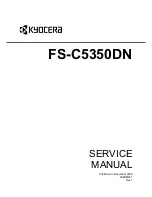
265
9.5.
Upper Layer
9.5.1.
DNS (Domain Name System)
The DNS (Domain Name System) protocol provides host name and IP address resolution as a service to
client applications. DNS servers enable humans to use logical node names, utilizing a fully qualified domain
name structure, to access network resources.
Domain Names are comprised of 2 or more parts, separated by dots. The part on the left is the most
specific, and the part on the right is the most general. A given device may have more than one Domain
Name but a given Domain Name points to only one device. For example, the Domain Names below:
Toshibatec.com
Mail.toshibatec.com
ifax.toshibatec.com
can all refer to the same device, but each domain name can refer to no more than one device.
Usually, all of the devices on a given network will have the same right-hand portion of their Domain Names
(i.e. toshibatec.com in the examples above). It is also possible for a Domain Name to exist but not be
connected to an actual device.
This is often done so that a group or business can have an Internet email address without having to
establish a real Internet site. In these cases, some real Internet machine must handle the email on behalf of
the listed Domain Name.
Specification for this name system follows this basic guideline.
• The name must be separated by dots and must start with ASCII code.
• Only Alpha numeric and hyphen are available.
• Up to 63 characters maximum, separated by dots.
• Up to 255 characters maximum, including all dots.
• Capital letters and small letters are not identical. (Case Sensitive.)
The advantage of using a DNS server over a host lookup table, for host name resolution, is to avoid the
need for a single centralized clearinghouse for all names. The authority for this information can be
delegated to different organizations on the network responsible for it.
There are at least 10 Root DNS servers installed all over the world.
DNS Server (root)
DNS Server
(toshibatec.com)
DNS Server (jp)
DNS Server (co.jp)
DNS Server
(toshfax.co.jp)
Mail Server
mlsv.toshfax.co.jp
domain
1
2
3
4
5
6
7
8
9
10
DNS Name Resolution Sample
Toshiba
Device
Internet Fax
Summary of Contents for e-STUDIO190F
Page 5: ...5 ...
Page 21: ...21 1 2 Control Panel For Americas e STUDIO190F ...
Page 119: ...119 Sensor and Switch Location ...
Page 185: ...185 6 3 Printer Receive Mechanism 6 3 1 Component Layout and Paper Path ...
Page 234: ...234 7 Installation Refer to Quick Guide For Facsimile and Copy Functions ...
Page 297: ...297 memo ...
Page 299: ...299 memo ...
















































